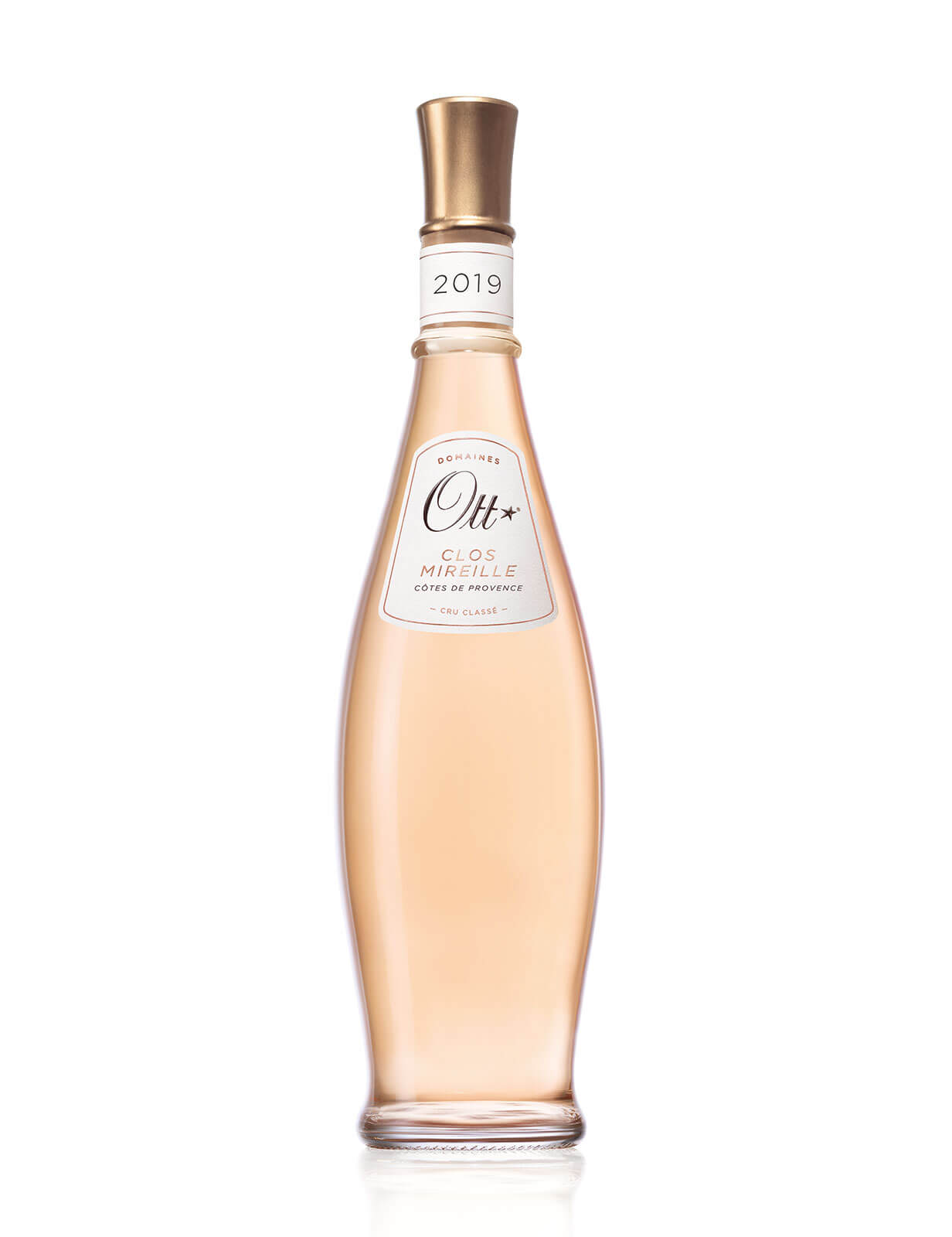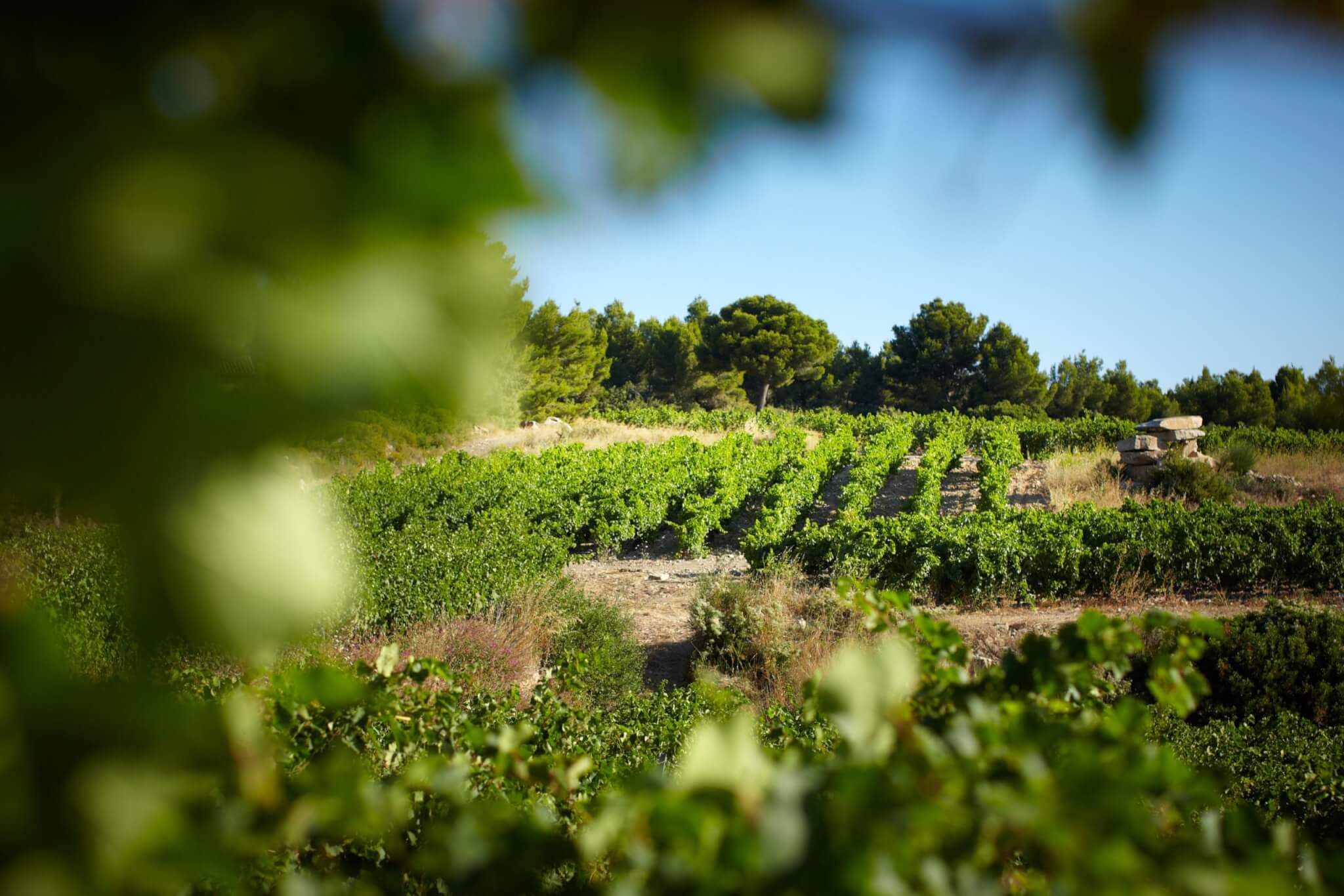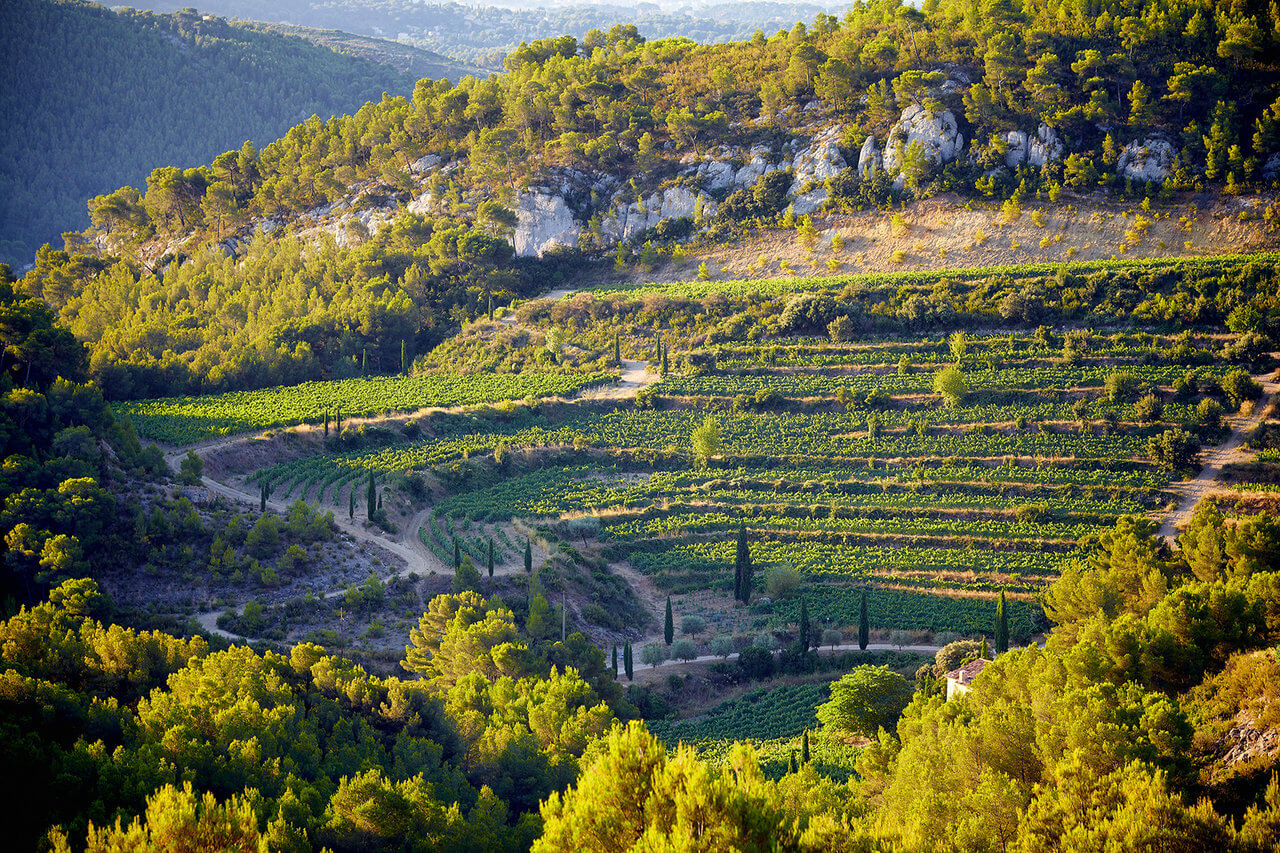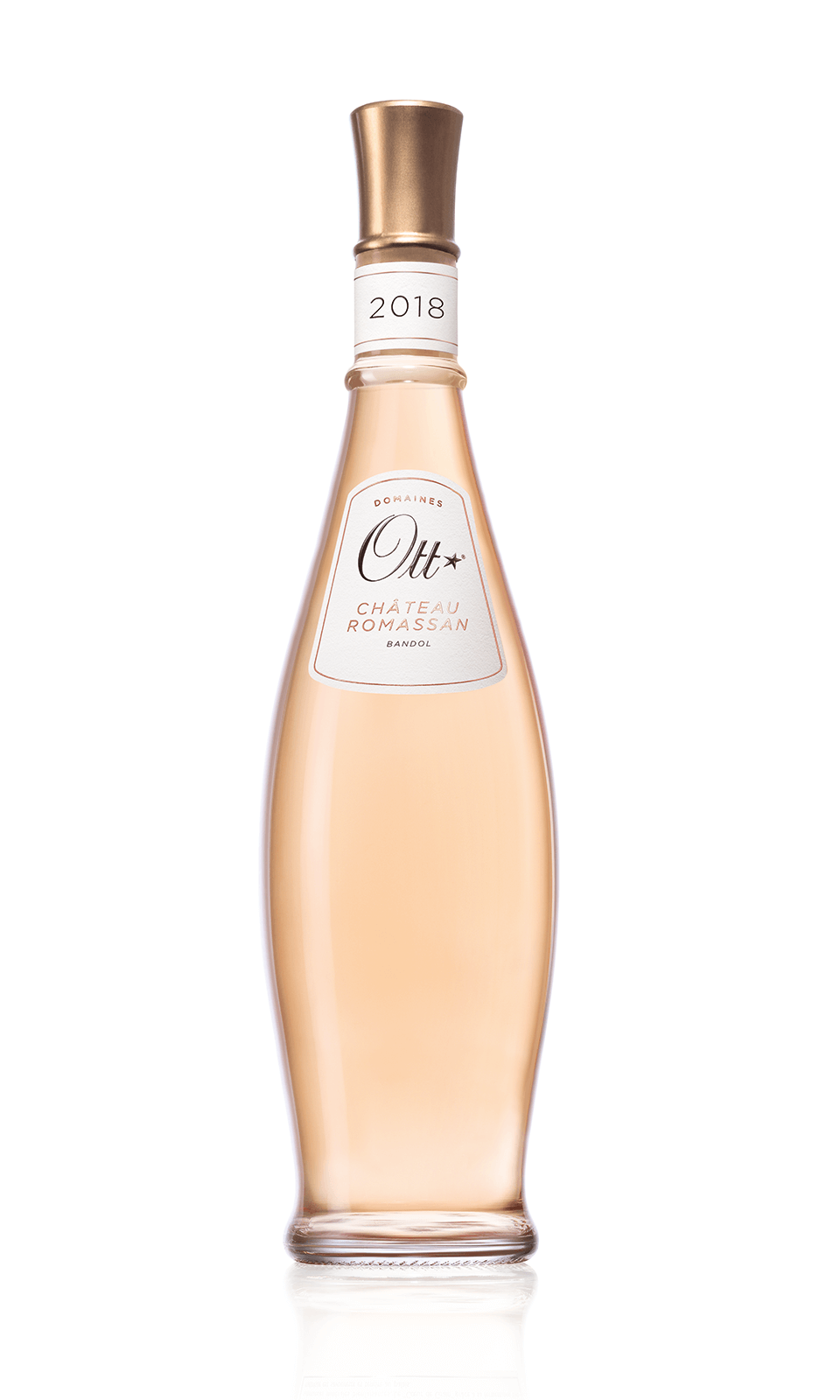by Ken Gargett
In the northern hemisphere, the devastation caused by COVID-19 combined with the plunge into winter probably does not put a good rosé at the front and center of your drinking thoughts.
On the south side of the equator, however, a much more manageable (touch wood) situation with the virus (at the moment at least) and the onset of spring and summer weather mean that now is the perfect time for rosé.
My advice to my northern friends who are unable to visit us at the moment or even unable to head to the Mediterranean for a milder winter break: turn up the thermostat, get some fresh seafood, and chill a bottle of great rosé. It is surely the next best thing.

Domaines Ott Clos Mireille 2019
Why rosé?
Mediterranean rosé has long been a highlight of any visit to the region; however, for many years rosé was a bit on the nose down under as well as in the United States. These wines were cheap, overly sweet, clumsy, and not very appealing at all.
Winemakers used whatever was left over and really gave the category no love at all. Eventually, demand by those who had visited the south of France and parts of Italy for rosé like the gems they gleefully scoffed on their holidays, and a change of tack by winemakers sick of being asked why they couldn’t make decent rosé, saw some of Australia’s younger and more innovative winemakers board the rosé train. And now we have some stunners!
The grapes and the methods of the best from the top European regions were replicated and the result is a plethora of clean, fresh, elegant, dry, crisp rosé wines. We have also seen importers prepared to take a calculated risk and bring some of best of these overseas wines to Australia.
But we are not here to praise Aussie rosé. Rather we are looking at a couple of the very best rosés made anywhere on the planet.
It is worth digressing to note that good rosé is the perfect match for a wide range of cuisines and dishes. A crab salad, rare lamb, fresh strawberries – that gives you an idea of just how versatile this wine can be. Or chilled by itself.
I think that most local winemakers would concede that Australia’s best rosés are simply attempts to do what the top makers in places like Côtes de Provence, Tavel, and Bandol have done for decades, and that we are yet to match their finest. If you want to drink the world’s best rosés, the Mediterranean wine regions are still the place to look.
You can pick up endless bottles of joy that are also stunning value from the Mediterranean, but if you want to go for the very best (and let’s face it, if you are swanning about the Med on a 30-meter launch with more crew than passengers, dropping by Louis XV for lunch in Monaco before a bit of fun at the tables, then you want the very best), I give you two candidates: Domaines Ott and Château de Pibarnon.
Depending on your location, these wines will cost around AUD$50 to AUD$80 a bottle.

Château de Pibarnon vineyards
Provence rosé
Both are from Provence, more specifically Ott is from Côtes de Provence and Pibarnon from Bandol. Rosé makes for more than half of the Provence’s production.
The Bandol region is perhaps the jewel in the crown, though the appellation known as Côtes de Provence is the largest in the region and provides 75 percent of the total production, 80 percent of that being rosé.
Varieties such as Carignan, Mourvèdre, Grenache, Cinsaut, and Tibouren are most popular in the Côtes de Provence and are supplemented by increasing percentages of Cabernet Sauvignon and Syrah. There are certain regulations – a maximum of 40 percent Carignan and a requirement that at least 60 percent of any rosé be Grenache, Cinsaut, Mourvèdre, and/or Tibouren. The saignée method of maceration must be used for at least 20 percent of any wine used for a rosé.
In addition, each of the other local regions have their own requirements. Without going through all the details, Bandol is always worth a mention. Mourvèdre is the dominant grape, for both rosé, which makes up 70 percent of production, and red wine.
Mourvèdre must account for at least half of all wines (the only region in France where this is the prevailing variety), though many makers often use more. Cinsaut and Grenache are the next most popular grapes, while Syrah and Carignan cannot be more than 15 percent in total or 10 percent individually.
This is also ground zero for the celebrity wines – celebs seem to have adopted rosé as their preferred vehicle, but it has certainly not harmed the image of this wine around the world. Brad Pitt/Angelina Jolie’s Château Miraval with the Perrin Family from Château Beaucastel is perhaps most famous (forgive me but I have no idea whether they are still involved in this together since the decoupling), while Jon Bon Jovi and his son, John Malkovich, Kylie Minogue, Sarah Jessica Parker, and John Legend are also involved in their own projects.
Domaines Ott
Domaines Ott has three main estates: Clos Mireille and Château de Selle in Côtes de Provence and Château Romassan in Bandol. Ott also makes red and white wines – indeed, its earliest success came with whites – as well as other rosés, but it is the elite rosés in which we are interested.
These three estates were purchased in 1936, 1912, and 1956 respectively – the devastation wrought by phylloxera meant vineyard prices remained low for a considerable period. Production is around 350,000 bottles a year at both Château de Selle and Château Romassan, while at Clos Mireille rosé wine production is around 120,000 bottles. A new addition to the range, Etoile, is a blend from all three estates (I’ve not sighted a bottle as yet).
Winemaking here is based on organic fertilizers, vines are trellised on metal wires, the juice is fermented in stainless steel tanks and then matured in oak barrels. Occasional lees stirring.
Marcel Ott, originally from Alsace, established his family’s estate in 1896. In truth, I have not tasted Château de Selle but I am enamored of the other two. Both vineyards are located close to the coast and it is said that the location is especially important to Mireille, lending it a hint of sea spray.
Clos Mireille is at La Londe les Maures, near the medieval Fort de Brégançon. Mireille is made from Grenache, Cinsaut and Syrah, while Château Romassan is mostly Mourvèdre with some Grenache.
Prior to 2006, Ott was only making white from the Mireille vineyard. They then moved into rosé and this wine was soon recognized as if not the first prestige rosé, then certainly the leading one.
Any discussion on Domaines Ott must include the elegant and extremely distinctive bottle inspired by a Greek amphora discovered at Château de Selle. Marcel’s son, René, came up with the design.
He attempted to have it adopted by all Provencal producers, but this idea was rejected (something I suspect a few of the descendants might now regret). René patented the design for the estate.
Prior to adopting this bottle, Domaines Ott also made a considerable quantity of bulk wine, abandoning that with the push to make the best rosé possible. Today, the estate is run by cousins Christian and Jean-François Ott. In 2004, it became part of the Louis Roederer empire.
Château de Pibarnon
Château de Pibarnon is all Bandol and offers the additional bonus of being a rosé that is known to age well. Unsurprisingly, Mourvèdre is to the fore here.
Pibarnon was purchased by Catherine and Henri de Saint Victor in the late 1970s. They are also known for superb reds as well as their rosés. Eric de Saint Victor, Henri’s son, took over in 2013 when Henri passed away.

Terraced vineyards around Château de Pibarnon
The estate is at 900 feet above sea level, the highest estate in the appellation. The mineral-rich soils, famous for their water retention, are known as Trias. Pibarnon is certified organic, harvesting is by hand, indigenous yeasts are used, and both fermentation and aging occur in a mix of old and new French oak casks with some tanks.
The rosé is a 60/40 blend of Mourvèdre and Cinsault, while the Nuances rosé is 100 percent Mourvèdre.
The rosé comes from a vineyard strong in chalk, blue-tinted clay, and microfossils. It is prized for its water-retaining qualities and also found in the Jura and Pomerol. Wild yeasts and then six months in tank.
Nuances is a 100 percent Mourvèdre micro cuvée from specific plots in the vineyard. The aim is to produce a wine that will age and improve. The old vines, which include the prized Bel Air parcel, are the estate’s lowest yielding. This wine matures for five months longer than the standard.
Eight days skin contact, fermentation with natural yeasts in Italian clay amphorae (one-third), and a 30-hectoliter foudre for the remainder.
Tasting notes
Domaines Ott Clos Mireille 2019
From the Côtes de Provence, this is considered to be not only one of the world’s great rosés but possibly the very first “prestige” rosé made. From the Mireille vineyard, planted in 1936. The palest of hues hides some intense flavors yet balance and delicacy is maintained throughout. Clean acidity. Strawberries and peaches. A lovely clean, dry finish. Seamless. A blend of Grenache, Cinsault, and Syrah. 93.

Domaines Ott Château Romassan 2018
Domaines Ott Château Romassan 2018
This is the palest of colors, deep sunlight. Lovely, lifted aromatics. Ripe with spices, strawberries, and more. Delightfully elegant and subtle. Appealing, soft texture. Flick of acidity. This is absolutely perfect for a crab salad. 92.

Château de Pibarnon Bandol Rosé
Château de Pibarnon Bandol Rose 2018
A deeper pink/orange than most. Florals, warm earth, cinnamon, red fruits. Put bluntly, masses of flavor. An undertow of chalkiness and stone fruits. Very appealing supple texture. Very good length. This is a delightful, juicy, full-flavored rosé. Clean finish. 92.

Château de Pibarnon Nuances Rosé
Château de Pibarnon Bandol Rosé Nuances 2016
The 2016 is the brand-new release and even with those years on it already, this is a wine that will age for many years yet. The color is an even slightly deeper pink/orange. Spices, cloves, raspberries, florals. A touch of stone fruit. There is a slightly wild note here, as though the local breezes are blowing in across the Provencal lavender fields. This is persistent and finely balanced. Excellent length. Very fine yet full of flavor. 93.
For more information, please visit www.domaines-ott.com and www.pibarnon.com.
You may also enjoy:
Champagne Labruyère And JM Sélèque: The Majesty Of Grower Champagnes
Champagne Jacquesson: Superlative Grower Movement Single-Vineyard Wines
The Massandra Collection Crimean Wine That Screams Place And History. And What A Story It Tells!





















































Leave a Reply
Want to join the discussion?Feel free to contribute!